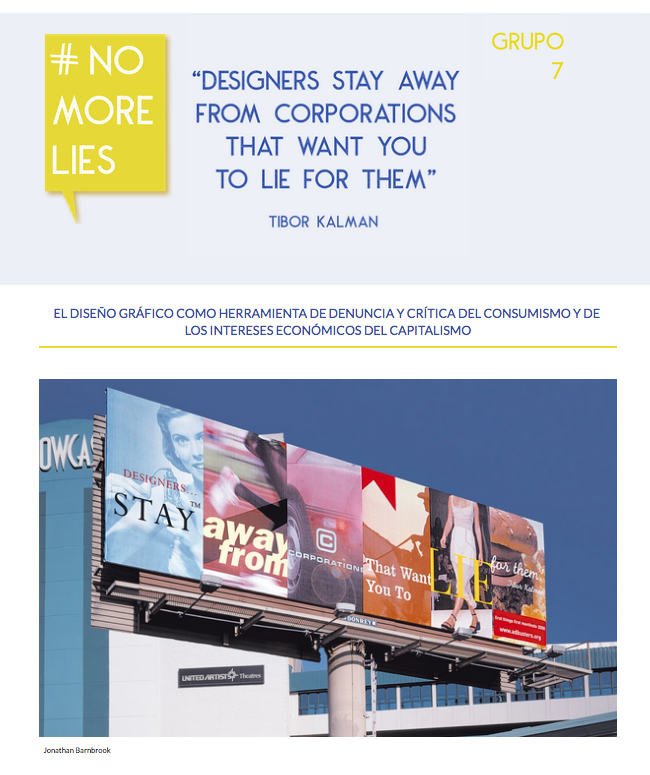Hi, I am new here. I am a student of Graphic Design at UOC online university in Spain.
In the Digital Communities and Resources subject a group of four students had to make a virtual project showed in a Google Sites page. The last task is to spread it along the web. I found this forum which I find very interesting and useful.
So I have decided to post here some parts of it, because unfortunately the site can not be shared.
Although it is written in Spanish, I have seen there are some Spanish speakers around. I hope some of you got caught and would like to see more. Let me know your thoughts please.
#recomuoc #nomorelies
This is our introduction —
Our project’s title is linked to the idea of studying and analyzing the way that design denounces any kind of abuse from the capitalism and how this interacts to the society using the design.
We have studied and discovered different artists and movements that used graphic design as a “weapon” with different formats: advertising, street art, graffiti, editorial design… Sometimes they did it following the social rules, other times without respecting them.
We have made great discoveries: from local to global. From how to create a virtual team to notice the way we consume or the relevance that (as designers) our actions have for the society.
The information we have included in our project is only small sample of the more relevant artist and movements, maybe in the future we will be able to study them in a deeper way.
In Spanish —
El título de nuestro proyecto está ligado a la idea de estudiar y analizar el modo en el que el diseño denuncia cualquier tipo de abuso del capitalismo y cómo interactúa con la sociedad mediante el diseño.
Hemos estudiado y descubierto diferentes artistas y movimientos que han usado el diseño gráfico como “arma” con diferentes formatos: anuncios, arte callejero, grafiti, diseño editorial… Algunas veces siguiendo los cauces convencionales y otras saltándose las normas.
A lo largo de estas semanas, hemos podido descubrir muchas cosas: desde cómo trabajar virtualmente en equipo hasta cómo consumimos o la repercusión que, como diseñadores, nuestras acciones tienen en la sociedad.
La información que hemos incluido en nuestro proyecto es tan solo una pequeña muestra de los artistas y movimientos más relevantes pero hay muchos otros. Tal vez en el futuro podamos estudiarlos con más profundidad.
Here you have a link to our Prezi presentation: https://prezi.com/view/NDUw8EmD4gGvnzGPwpzx/
I also attach the front cover of the Sites page.

Thanks for your help. Hope you like it.
Carlos - UOC